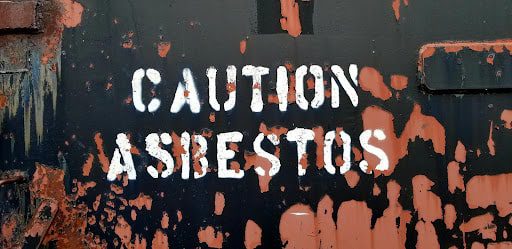We all know that asbestos is an extremely hazardous substance and one which has been banned in new buildings for some time but, how do the laws in the UK compare to those in the US? In this article, we take a look at the rules and regulations in both countries.
The use of asbestos as a building or insulation material has been prohibited in the UK for over 20 years. However, the same cannot be said for the US, where regulations have been attempted, but have not been made into law.
Despite 20 years without asbestos production and usage in many countries like the UK, asbestos lung cancer claims continue to rise in many countries. In this article, we’ll discuss the reasons for the ban on asbestos and the differences – and similarities – in legislation between the UK and the USA.
What is Asbestos?
Asbestos is a naturally occurring fibrous silicate material which can resemble dirty cotton wool in some instances. This material is made up of clusters of long thin crystals which can be crumbled to form insulation for roofing, flooring, ceilings and walls. Due to its low cost, asbestos was used as a building material in the UK from the 1930s and in the USA since 1858.
Why is Asbestos Banned in the UK?
The use of asbestos as a building material was banned in the UK in 1999, and has attempted to be banned on multiple occasions in the USA. This occurred after it was discovered that contact with the material can cause lung diseases – most specifically, mesothelioma, which is an aggressive form of lung cancer which develops in the lining of the lung.
Contact with asbestos can also cause COPD (emphysema) and other respiratory conditions. Mesothelioma is directly linked to contact with asbestos and develops when asbestos fibres are released into the air and then inhaled.
Although the use of asbestos is prohibited in the UK, it still exists in some buildings which were erected prior to the ban. What’s more, asbestos can take decades to produce symptoms in the body, meaning there are approximately 2,544 deaths from mesothelioma in the UK every year.
Asbestos is particularly prevalent in older public buildings such as schools, hospitals and libraries. So, should the asbestos be disturbed through renovation or by inclement weather, a significant number of people – including children – may be at risk of coming into contact with this dangerous substance. Despite awareness of the dangers, some countries, including China, Russia and India, are still yet to ban the use of asbestos in new builds.
Asbestos Legislation in the UK

The 2012 Control of Asbestos Regulations in the UK state that buildings constructed with asbestos before 1999 may remain in place as long as the asbestos is not disturbed. This means that during renovation and demolition projects in both residential and business properties, the correct procedures must be followed by all personnel to reduce the risk of the inhalation of this hazardous material.
Training is mandatory for all personnel, and the asbestos must be identified and a risk assessment produced before work can commence. Failure to comply with these regulations can lead to prosecution and possible lawsuits by affected personnel.
The Health and Safety Executive says, ‘If you have a duty to manage asbestos, you must take reasonable steps to find out if there are materials containing asbestos and, if so, its amount, where it is and what condition it is in’.
Asbestos Legislation in the USA

In the USA, asbestos is regulated through the EPA Asbestos Hazard Emergency Response Act which requires schools and other educational buildings to be inspected regularly for the presence of asbestos. While the manufacture and use of asbestos is not prohibited in the US, it is highly regulated.
At present, asbestos is still used in America for a number of purposes including vehicle parts such as brake blocks, brake pads and gaskets. There have, so far, been three separate bills created to ban asbestos in the States, all of which have failed at Congress.
The Differences and Similarities of Asbestos Regulations in UK and US
In both the UK and the USA, the presence of asbestos in buildings – particularly public buildings – is highly regulated. There are stiff penalties for those who fail to follow the proper guidelines, but buildings containing asbestos, which were constructed prior to 1989 in the USA and 1991 in the UK, can remain in place as long as government guidelines regarding its management are followed strictly.
Additionally, the use of asbestos in new buildings is prohibited on both sides of the pond. However, while the use of asbestos is banned in the UK in all cases, it is still permitted in the USA for certain manufacturing purposes – namely vehicle parts. As with the UK, measures are in place to protect those who work in close contact with asbestos, and a claim for compensation may be made if employers and building owners do not properly follow these measures.
Asbestos is a Global Problem
While many countries, including the United States, still permit the use of asbestos in certain instances, we should never overlook the dangers of this hazardous material. In America, there are around 3,000 new diagnoses and 2,500 deaths from mesothelioma every year, with a life expectancy of just 18 to 31 months for sufferers.
It’s estimated that a significant majority of these cases are directly caused by contact with asbestos either in the workplace or in a public building. Experts warn that, without a blanket ban on asbestos worldwide, these deaths will sadly continue to devastate families on a global scale.
Help keep news FREE for our readers
Supporting your local community newspaper/online news outlet is crucial now more than ever. If you believe in independent journalism, then consider making a valuable contribution by making a one-time or monthly donation. We operate in rural areas where providing unbiased news can be challenging. Read More About Supporting The West Wales Chronicle


























